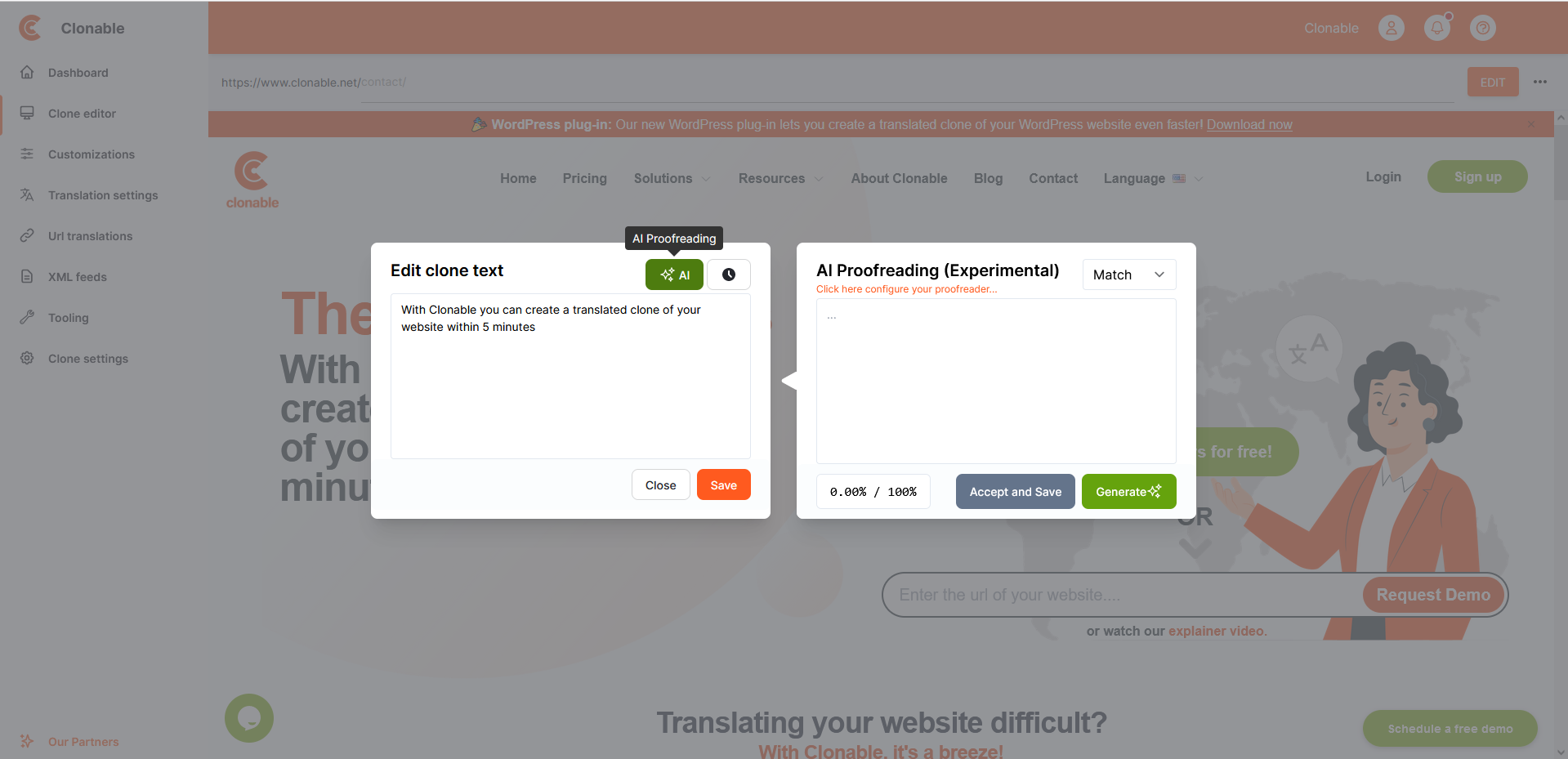Tooling
Clonable provides tooling that lets you improve the quality of the clone, or customise certain aspects of the clone.
AI Proofreading
With Clonable's proofreader, you can have the translated texts of your clone proofread. Via the tooling page, you can set various settings for the proofreader so that the quality of the proofreading is adjusted to your preferences.
With terminology, you indicate which words the proofreader should use. You can use this to ensure that words translated to the wrong synonym are correctly replaced with the correct term. Examples of terminology are:
The proofreader expects you to provide terminology in English. So use English terms here too so that the proofreader does not get confused.
| Terminologie | Reason |
|---|---|
| Financial advisors | This will prevent an automatic translator from translating the Dutch word 'bank' to 'couch', but keeping the correct term 'bank'. |
| Medical supply webshop | Here the proofreader can help correctly transfer specific jargon into a new language, like for example Latin names of medical products. |
| Art gallery | Can ensure that names of artworks are not translated and that the same word choices are made for readability of the text. |
Using the proofreader
The proofreader can be used via the editor, which can be used when you want to replace a piece of text. You can click the green "AI" button, and this then opens a separate window for proofreading.
The proofreader has a setting for automatically opening the proofreading window, you can set this via the tooling screen.

The proofreader will not start working until you click the green "Generate" button. When you do this, the proofreader will start working on improving the text. As soon as it is done, you have the option to accept and save the new text. If you want to revert the text back to the original one, you can always look back in the editor's history.
Shortcomings of the proofreader
The proofreader is currently still in the experimental phase, this means that there may still be problems that we need to do additional research on. Known problems of the proofreaders are:
- You cannot currently verify whether the new texts are actually better, or not.
- If the original text changes, then you also lose the proofread text.
- Only proofreading a couple of words does not yet work correctly. Here the proofreader sometimes still gives an explanation.
- If the text contains HTML, the tags may be omitted or incorrectly modified.